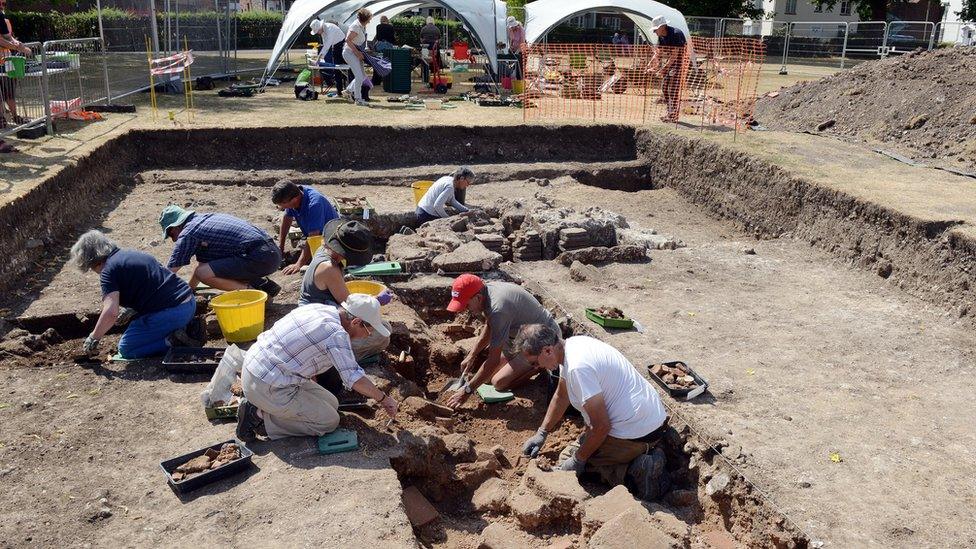Shifted sands reveal Roman settlement in Alderney
- Published
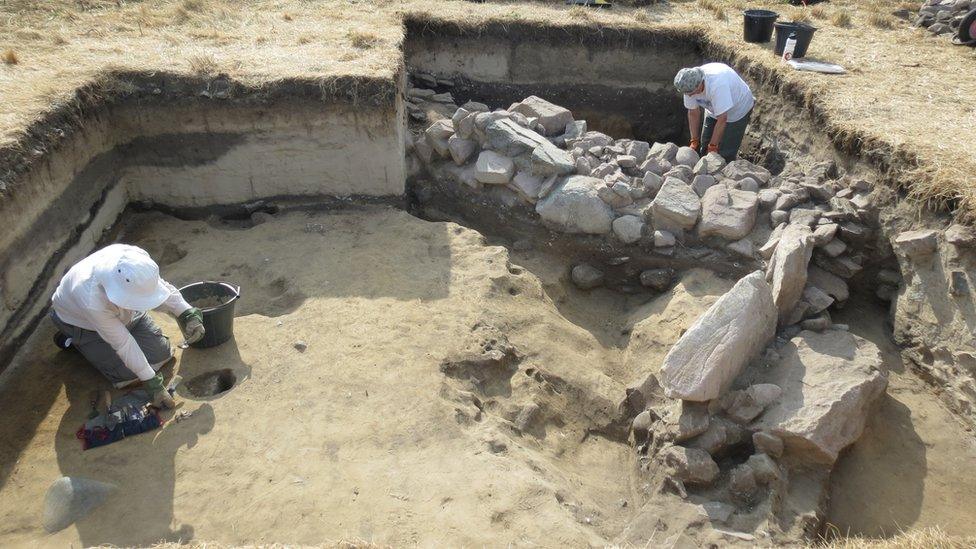
Archaeologists hoped to find an Iron Age cemetery at the site, but were surprised to find evidence of a whole village
A "substantial" Roman village has been found preserved beneath sand in the Channel Islands.
Excavations on Longis Common in Alderney revealed walls, a stone courtyard, pottery and coins.
The site is thought to date back to the 2nd Century BC, which is "considerably earlier" than previous discoveries.
Experts say the sand could have buried the island's first main settlement after its occupants moved to where the modern town is now.
Archaeologist Dr Philip De Jersey said the new village is connected to Iron Age burial sites in the area which are "much richer" than other burials in the Channel Islands.
"It suggests that at least some of the population had some wealth and social status - these were not all impoverished peasants living on the very edge of the Roman Empire," he said.

A bronze sestertius depicting the Roman Emperor Antoninus Pius of the 2nd Century was found
Dr De Jersey said the "enormous" site may spread across 15,000 sq m (3.7 acres), making it the largest settlement found in the Channel Islands and nearby areas of France.
In 2011, a building near the new settlement - known locally as the Nunnery - was found to be of Roman origin from the 4th Century AD. It is now thought to be one of the best preserved small Roman forts in Britain.
Archaeologists say the new settlement may have been connected to the fort at some point in its history.
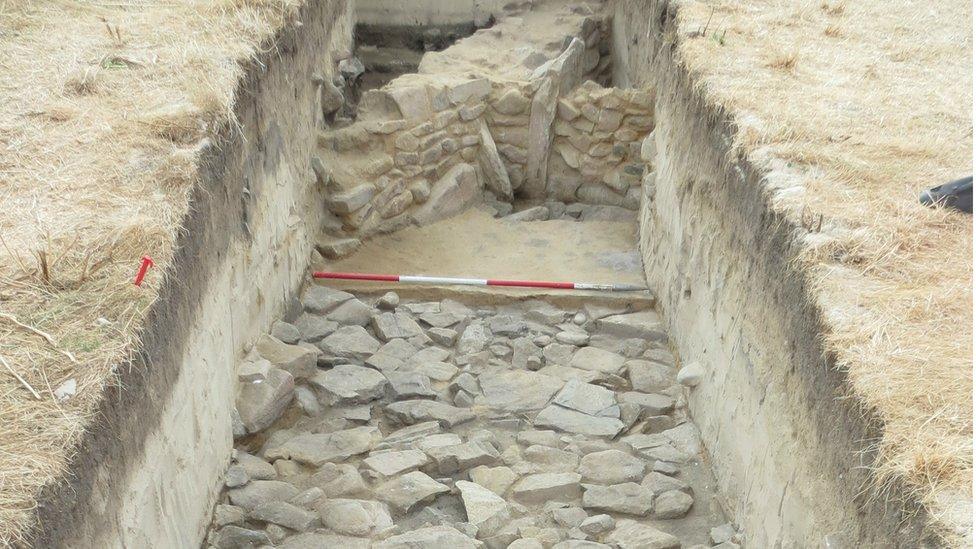
The dig site will be filled in to preserve the Roman buildings while archaeologists analyse the 2018 finds
Dr Jason Monaghan, a local historian, said one of the unique things about the site was the way it was preserved.
"(At) most Roman towns, when they fell into ruins, the locals nicked all the stones to build their farms and cathedrals and things," he said.
"What has happened at Longis is the buildings have gone out of use, the sand has blown in and buried them under three, four feet of sand........everyone would have forgotten about them."

Alderney (Riduna) in the Roman period
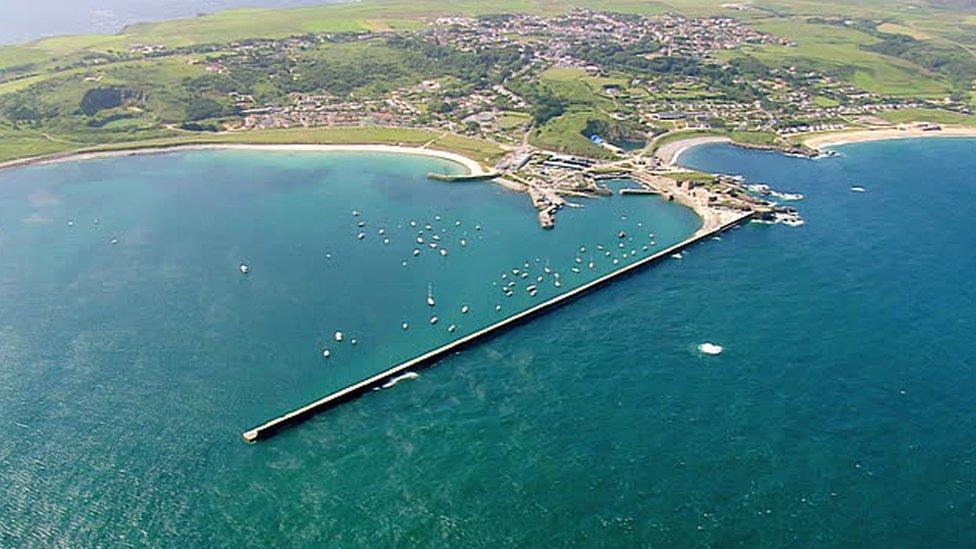
Alderney is thought to have been part of the Roman Empire for 400 years
Alderney, or Riduna, was part of a group of islands the Romans called Insulae Lenuri
Based on finds, the island is thought to have been visited by ships from the Mediterranean carrying Roman pottery and wine as early as the 2nd Century BC
Longis, where evidence of the settlement was found, is thought to have been a "natural harbour"
The late Roman fort built near Longis is thought to have bern used to guard a naval base in the area
At some time after the fall of the Roman Empire the settlement at Longis is thought to have been abandoned
By the medieval period, St Anne, the island's only town, was occupied
Source: Dr Jason Monaghan
- Published1 August 2018
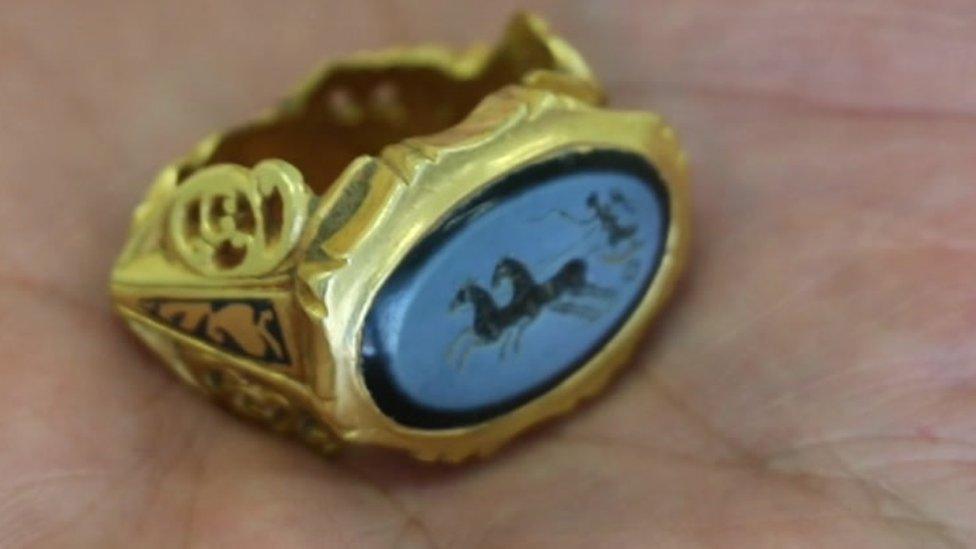
- Published26 July 2018
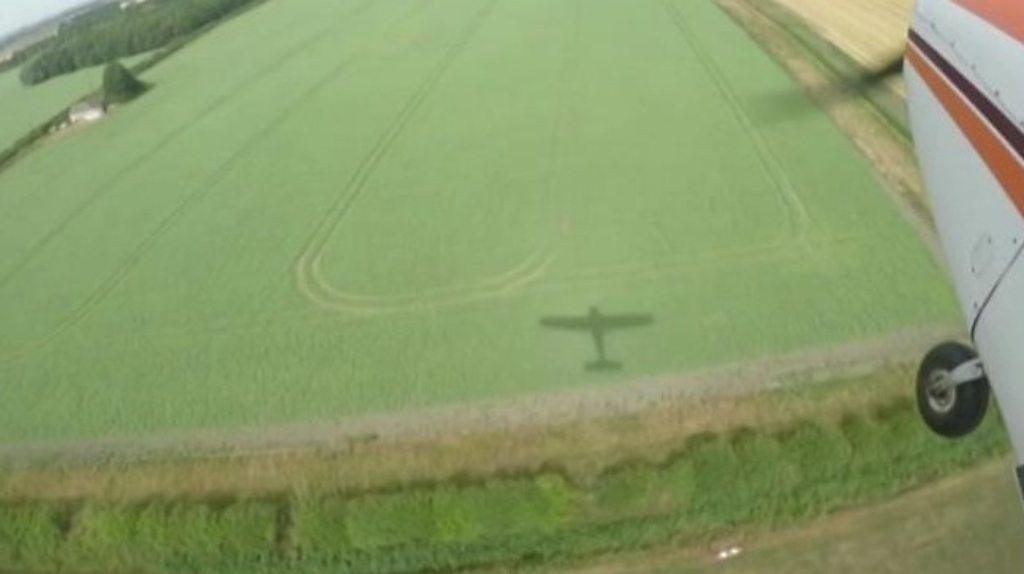
- Published26 July 2018
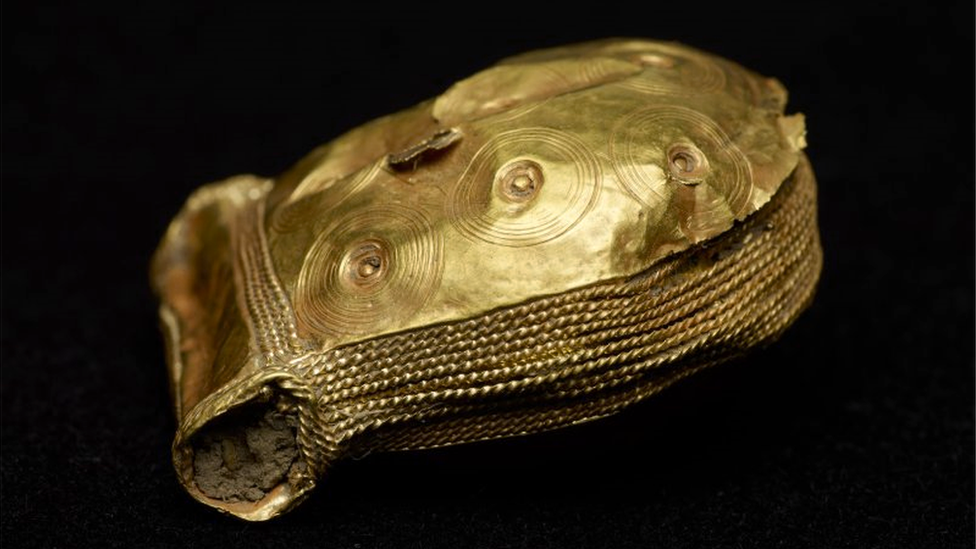
- Published25 July 2018

- Published21 July 2018
